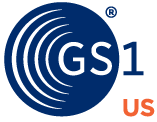The end of the Universal Product Code (UPC) is fast approaching, and both retailers and food and beverage manufacturers need to start planning for the future, according to GS1 US, the standards body that is preparing the retail industry to transition from linear barcodes to the data-rich 2D codes by 2027.
Because the new codes will have the ability to convey much more information, they will provide manufacturers with the ability to incorporate marketing messages and other consumer-oriented content, such as recipes. The new codes will have the ability to include the GS1 Digital Link, which will enable brands to web-enable the codes so that consumers can connect to online information using their smartphones.
At the same time, retailers hope to be able to leverage the data in the 2D codes to better manage their inventories and to support other functions, such as product recalls.
“I feel that the suppliers are the drivers of this,” said Marcia Mendez, senior program manager, Walmart, in a GS1 US podcast this week. “If the brands aren’t converting, what’s the driver for us to engage with this activity?”
Mendez said Walmart stores in the U.S. can use their existing point-of-sale hardware to scan the new 2D codes at checkout, although additional software will need to be installed so that POS systems can “read and ingest” the data, she said. Other retailers will likely need to make adjustments to both hardware and software, according to GS1 US.
The organization is working with both retailers and manufacturers to create standards for the new 2D codes, which will contain the current Global Trade Identification Numbers (GTINs) that specify individual SKUs, plus additional data. While current UPC codes are limited to 48 characters, 2D codes can incorporate up to 7,000 characters. (QR codes, or quick response codes, are a type of 2D barcode.)
GS1 US has created test kits that retailers can use to assess their capability to scan and process the new codes at the point of sale and to support stocking and receiving functions in warehouses and distribution centers. The organization has dubbed the migration to the 2D codes “Sunrise 2027 – A New Dimension in Barcodes.”
In an interview with GS1 US, Kelly Schlafman, intelligent packaging leader at Procter & Gamble, said consumers are eager to have more product information at their fingertips.
“We are living in the age of the informed consumer,” she said. “The explosion of digital access to content is a key element of remaining competitive.”
The pandemic has accelerated consumers’ use of digital channels to access product information, Schlafman said.
“What they are seeking varies widely, but includes information about product ingredients, health and safety, sustainability, availability and sourcing,” she said.
P&G prefers the 2D DataMatrix barcodes, as opposed to QR codes, because of their smaller size and their current use in manufacturing, Schlafman said. The company’s testing also favors having the codes on the front of the packaging to help drive consumer engagement.
While manufacturers will likely see the codes as an opportunity to present marketing messages to customers, retailers will look to the codes to provide data that could be useful for inventory management and traceability, such as batch numbers and expiration dates.
In addition, retailers would like to be able to use the codes at both the case level and the item level to help track products throughout the supply chain, said Mendez.
Perhaps the biggest challenges for the rollout of the new 2D codes will be actually fitting them on product packaging, she said.
“Packaging engineers … are going to be the most challenged,” said Mendez. “If you can’t get the 2D barcode on the item that you are selling, you are going to have problems beginning in 2027.”
There will likely be a transition period when both the UPC and the new 2D barcodes will appear on product packaging, said Reid Jackson, vice president of corporate development, GS1 US, during the podcast.
For more information about Sunrise 2027 and the GS1 US Barcode Capabilities Test Kit, visit www.gs1us.org/sunrise2027.
Related: Walmart Aims to Become Regenerative; Trigo Tests Frictionless Checkout for Wakefern.

